How to Use Databricks

Databricks is a cloud-based data and AI platform built to help teams unify data engineering, data science, machine learning, and analytics into a single workflow. It was created by the original developers of Apache Spark and has since become one of the most widely adopted platforms for building modern data pipelines and AI solutions.
Whether you're processing massive datasets or deploying machine learning models into production, Databricks provides the infrastructure, tools, and collaborative environment to do it all efficiently.
What Is Databricks?
Databricks is an end-to-end platform for building and scaling data solutions. It includes:
-
Databricks Lakehouse: Combines the reliability of data warehouses with the flexibility of data lakes
-
Apache Spark-based engine: Enables distributed computing on large-scale datasets
-
Collaborative notebooks: For data exploration, coding, and visualization
-
Machine learning lifecycle tools: Including model tracking, experiment logging, and deployment
-
Delta Lake: Ensures ACID transactions and data reliability within data lakes
Databricks is used by data teams at companies of all sizes to build scalable pipelines, generate insights, and power AI systems.
To explore more cloud-based AI and data tools, visit I Need AI, where platforms like Databricks are categorized for easy discovery.
Getting Started with Databricks
To begin using Databricks:
-
Visit the official site: www.databricks.com
-
Sign up for a free trial or request enterprise access
-
Choose your cloud provider: AWS, Azure, or Google Cloud
-
Create a workspace and launch the Databricks environment
Once you’re in, the platform provides an intuitive UI where you can start creating clusters, uploading data, writing notebooks, and scheduling workflows.
Using Databricks Notebooks
Databricks notebooks are interactive environments where you can write code in Python, SQL, Scala, or R. Key features include:
-
Visualizations directly in the output cells
-
Markdown support for documentation
-
Version control for collaborative work
-
Access to datasets stored in cloud storage or Delta Lake
You can use notebooks to perform data cleaning, analysis, transformation, and model training — all in one place.
Building Data Pipelines with Delta Lake
Delta Lake is built into Databricks and allows you to create high-performance pipelines with support for:
-
ACID transactions
-
Schema enforcement
-
Time travel (accessing older versions of data)
-
Efficient data caching and updates
This makes Databricks ideal for ETL and ELT workflows, especially when dealing with streaming or batch data at scale.
Machine Learning and MLOps
Databricks also includes a powerful suite of tools for the machine learning lifecycle:
-
MLflow for experiment tracking and model management
-
AutoML for fast model prototyping
-
Hyperparameter tuning and job scheduling
-
Model registry for storing and versioning models
Once trained, models can be deployed directly from Databricks or exported to serve via APIs.
Collaboration and Integration
One of Databricks' strengths is its collaborative environment, enabling teams to work together in real-time. It integrates with:
-
GitHub and Azure DevOps for version control
-
Power BI, Tableau, and Looker for BI tools
-
Kafka, Airflow, and dbt for pipeline orchestration
-
Snowflake, Redshift, and other warehouses for hybrid architectures
This allows businesses to centralize operations in one platform while connecting with their existing stack.
You can find more collaborative AI tools and platforms at I Need AI, categorized for productivity and enterprise use.
Who Should Use Databricks?
Databricks is ideal for:
-
Data engineers building scalable ETL pipelines
-
Data scientists creating ML models and conducting research
-
Analysts exploring and visualizing large datasets
-
Enterprises managing unified analytics and AI operations
Whether you're processing petabytes of data or building real-time fraud detection models, Databricks supports a full production-grade workflow.
Final Thoughts
Databricks simplifies and unifies the way teams handle data and AI. With its Lakehouse architecture, real-time collaboration tools, and deep cloud integration, it helps organizations unlock insights, automate processes, and scale innovation. If you're looking for a platform that combines the best of data lakes, data warehouses, and machine learning, Databricks offers a proven, enterprise-ready solution.







